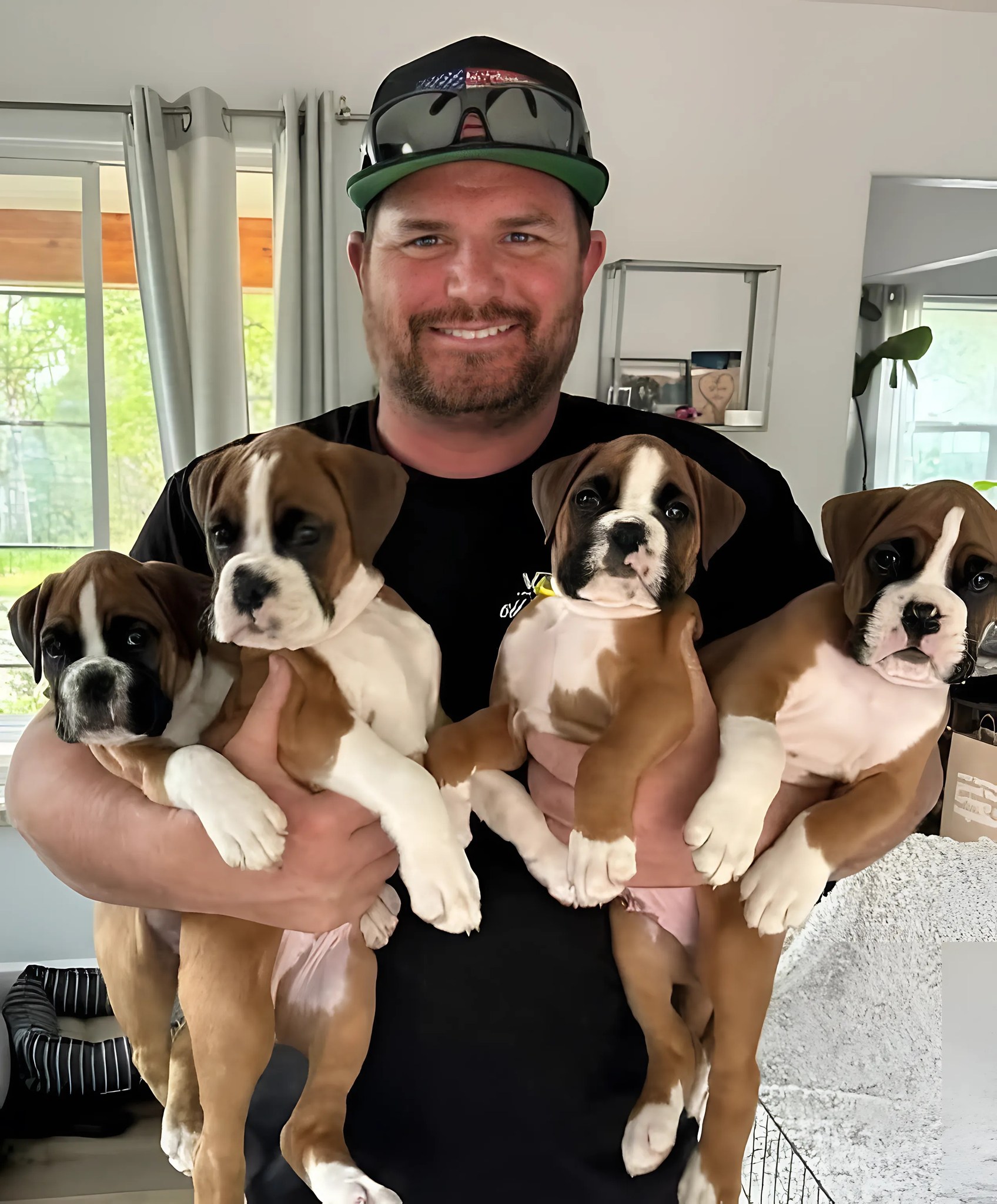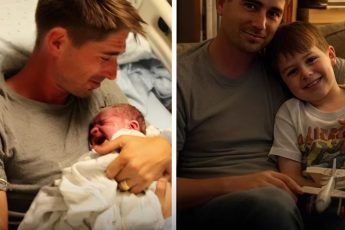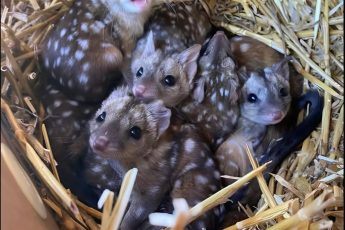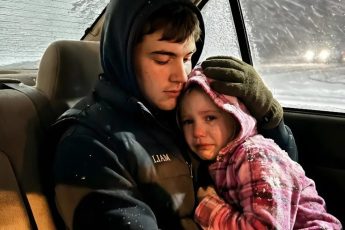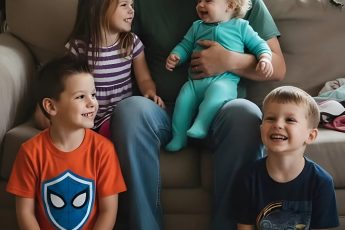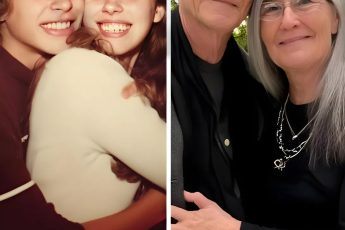My friend Tate, a veterinary technician, saw the tag, his expression turned serious, and he fell into a long, thoughtful silence.
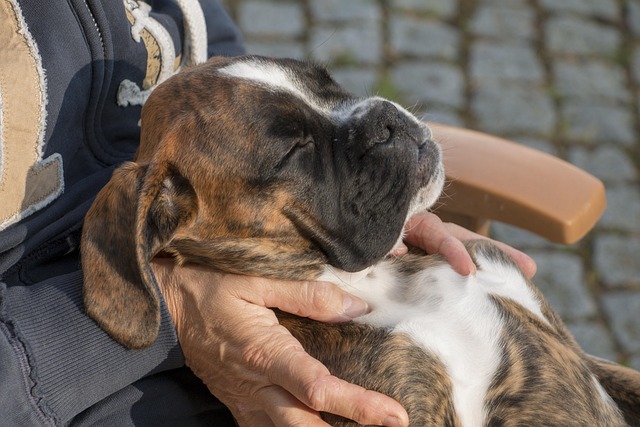
He mentioned that he’d seen something similar before, though he wouldn’t reveal the location.
After a long pause, he warned me, ‘These pups may not be as lost as you think.’
There was an urgent caution in his tone about discussing the matter, and although I didn’t quite understand his words, I sensed that something grim lurked behind this discovery.

The phrase ‘Not yours’ continued to echo in my mind the next morning as I locked the doors.
I couldn’t stop thinking: who could have written those words and why?
Later that day, Tate returned with a scanner to check the puppies’ microchips.
The puppy with the yellow collar signalled immediately, while the other three had no chips at all.
Using the information from the chip, we traced the puppy’s registration to a vet clinic a few counties away – a place that, according to the surprised receptionist, hadn’t registered this dog in years.
She even added that they no longer had the owner’s details.

The numbers didn’t add up: these puppies were no more than eight weeks old.
Tate’s silence reinforced my suspicions.
Finally he admitted, ‘There are people who breed dogs for reasons you’d rather not know about.’
‘That collar could be a warning,’ he added.
When I insisted on an explanation, he muttered: ‘It could be linked to fighting organisations… or worse.’
The thought of illegal activities such as dog fighting lurking in our countryside squeezed my heart.
I realised that these defenceless puppies needed protection, not social media exposure.
I decided to hide the puppies in my home for the next four days.

Every unexpected knock on the door caused me to panic, even though the puppies themselves were cute and clumsy.
I assured myself that it was unlikely anyone would be looking for them.
But late one night, I heard a car drive down the gravel of my driveway.
Looking through the crack in the door, I saw an old truck parked outside.
Two men in baseball caps and heavy boots stepped out of it – one holding a leash and the other a torch.
Panic ran through my body like lightning.
I immediately locked myself in the bathroom with the pups, turned off the lights, and grabbed my phone.
Although I couldn’t reach Tate right away, I managed to send a text to my neighbour Jessa, asking her to call the sheriff if she noticed anything out of the ordinary.
Time flowed like a blur as I listened to muffled voices outside and one loud knock on the door.
Strangers tried to turn the knob, I heard muffled voices – one sounding apologetic, the other restrainedly angry.
I caught snippets of phrases: ‘They’re not here,’ one said, ’A kid must have found them and taken them to the shelter.’

Another stated, ‘Damn it. We’ll find them if they’re still alive.’
The phrase ‘if they’re still alive’ made my heart clench, and I wondered what they really meant.
After an agonising wait, the men drove off, tyres scraping on the gravel as they drove away.
I waited another hour before cautiously emerging from my hiding place, and later Jessa texted that the sheriff was on his way.
Deputy Ruiz arrived and listened carefully to my story, though he looked sceptical.
‘Are you sure it was the same people?’ – He asked.
I replied firmly, ‘I’m sure – they didn’t come to adopt, they were looking for something else.’
Although Ruiz promised to take a closer look at the situation, I sensed that he thought I was being alarmist.
Later, I broke Tate’s advice and posted pictures of the puppies online, deliberately omitting the yellow collar.
Within hours, there were many generous offers of adoption from sympathetic strangers, but one comment from user @DogMom92 particularly stood out.

She posted a photo of an adult boxer wearing the same yellow collar with the caption, ‘This is Max.’
She explained that Max disappeared from her property during a thunderstorm six months ago, and after a thorough search, she concluded that he was either stolen or hit by a car.
Although she was unaware of any direct ties to illegal activity, she mentioned that Max had been used for breeding multiple times before she took him in.
I wrote to her immediately, and as more details of Max’s story were revealed, it all started to come together – breeding, fights, missing dogs.
With @DogMom92’s permission, I relayed her information to Deputy Ruiz.
At first he brushed it off, but when I clarified the connection between the yellow collar and the timeline of events, his tone changed.
‘Let me investigate this,’ he said. – ‘We need to nip a possible system in the bud.’
A week later, Deputy Ruiz returned with news.
His team had discovered a secluded dwelling tucked away in the woods after several neighbours complained of nightly truck activity.
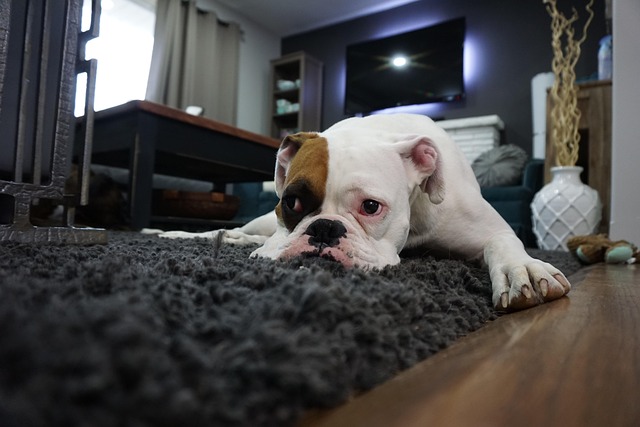
Animal Control organised a raid the next day.
I’ll never forget the horrors I saw: dozens of dogs in filthy cages, many emaciated or injured.
Max was among them – injured but alive.
Two men were taken into custody on suspicion of illegal breeding and animal cruelty, evidence was found that they were supplying dogs for fighting.
When @DogMom92 was finally reunited with Max, tears flowed for both her and me as I realised what these puppies had been through.
She took them all away until they were old enough for adoption, saying: ‘Max deserves his family back’ and promising to give each of them a safe and loving home.
In the end, a chance find on the side of the road turned into a life-saving mission.
Rescuing these four boxer puppies was not only about giving them shelter, but also about exposing the dark side of dog breeding and underground fights targeting defenceless animals.
This experience reminded me that sometimes you have to take a risk to do the right thing.
If you ever hesitate to help those in need, remember – you have the power to change the world for them, and with it, your life.

If this story has inspired you, share it with your friends.
You may start a chain reaction of compassion and courage.
